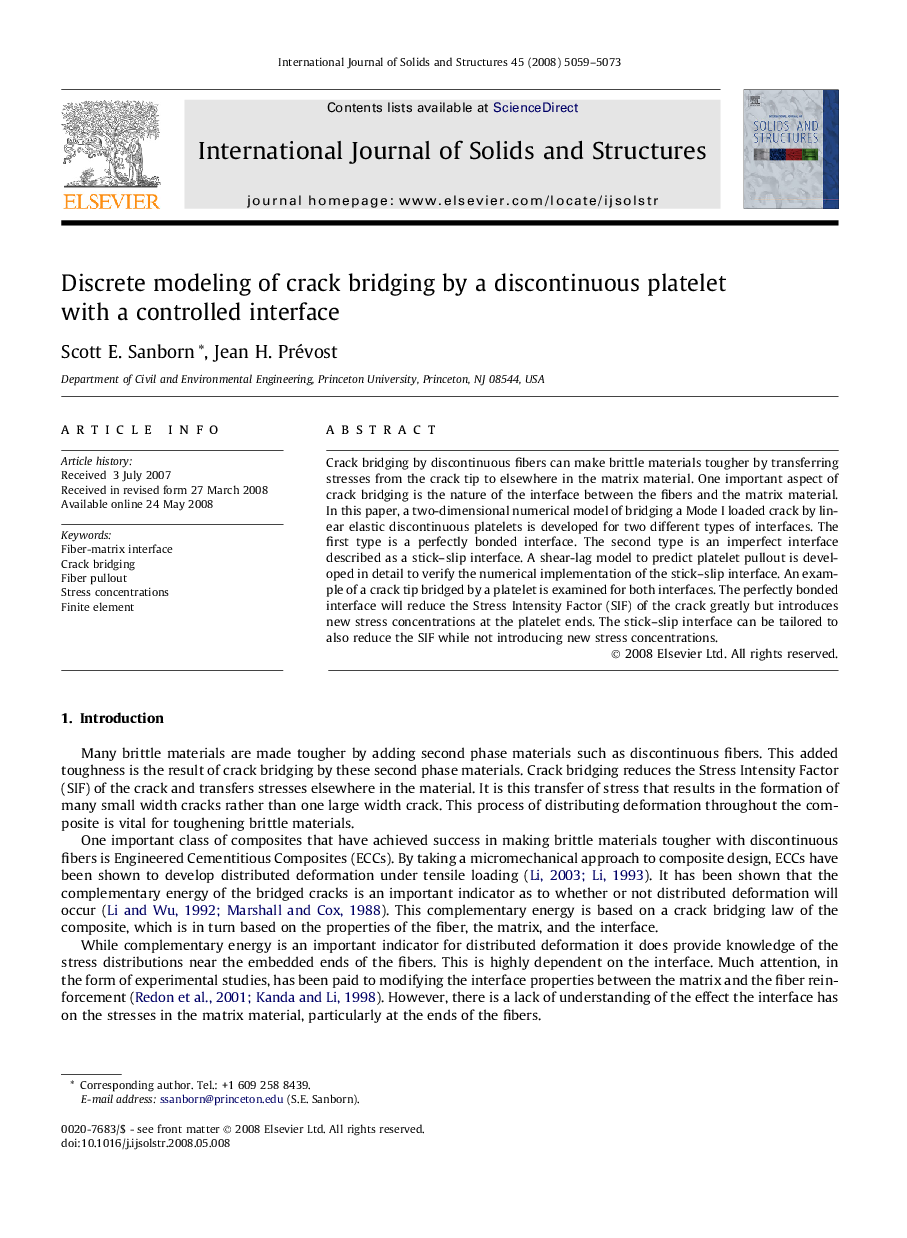| Article ID | Journal | Published Year | Pages | File Type |
|---|---|---|---|---|
| 279208 | International Journal of Solids and Structures | 2008 | 15 Pages |
Crack bridging by discontinuous fibers can make brittle materials tougher by transferring stresses from the crack tip to elsewhere in the matrix material. One important aspect of crack bridging is the nature of the interface between the fibers and the matrix material. In this paper, a two-dimensional numerical model of bridging a Mode I loaded crack by linear elastic discontinuous platelets is developed for two different types of interfaces. The first type is a perfectly bonded interface. The second type is an imperfect interface described as a stick–slip interface. A shear-lag model to predict platelet pullout is developed in detail to verify the numerical implementation of the stick–slip interface. An example of a crack tip bridged by a platelet is examined for both interfaces. The perfectly bonded interface will reduce the Stress Intensity Factor (SIF) of the crack greatly but introduces new stress concentrations at the platelet ends. The stick–slip interface can be tailored to also reduce the SIF while not introducing new stress concentrations.
